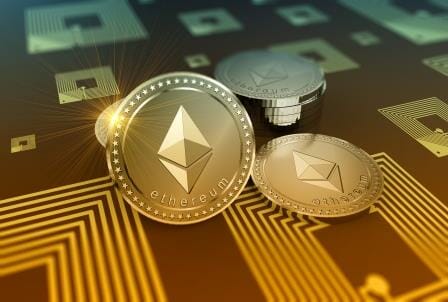Some members of the community issue a warning about possible market manipulation. In a year, the value that the DeFi space has in reserve has increased by more than 300%.
It was reported that the increase in Ether (ETH) prices is impacting the Ethereum decentralized finance (DeFi) market, since the reserve value of this ecosystem amounted to more than USD 1 billion, thus reaching a new all-time milestone in recent days.
This rebound can be seen on the DeFi Pulse monitoring platform, which reveals that in early February 2019 there were only USD 276 million in reserve in Ethereum DeFi applications. Consequently, this means that the new record represents an increase of more than 300 % in a year.
Bitcoiner Brad Mills believes that the celebration that was generated around the new all-time milestone with the USD 1 billion in reserve in DeFi is based on a “bold statement.” In this regard, he wonders what percentage of the “blocked” (unblocked however) USD 1 billion in DeFi is comprised of ICO (illiquid?) tokens and not inflated by ConsenSys or Ethereum foundations/founders.
It should be remembered that that, in March 2019, Maker DAO token holders voted to increase the network’s stability commission by 4%, through which smart contracts are paid to create DAI, Maker’s pegged token.
After the measure was approved, the users that requested loans with MKR to generate new DAI paid a 7.5% fee once their deals were closed. These programmatic loans are needed for the creation of the tokens to ensure the support of DAI in USD.
The development of the DeFi sector also allowed the emergence of a new paradigm that proposed an alternative to loans, assets and derivatives markets in the fiduciary world, with the advantages of decentralized protocols. Users that are connected to the Internet can now obtain a loan or trade-in open markets on the Ethereum platform.
In that regard, many DeFi projects require that users reserve an asset (ETH and DAI, among others) to participate in the protocol. These assets, “locked” as collateral, later became a measurement called “total value locked” (TVL), as shown by DeFi Pulse.
To calculate the TVL, DeFi Pulse analysts monitor the underlying smart contracts of each protocol in the Ethereum blockchain. They regularly update the graphics by determining the total balance of ETH and ERC-20 tokens in the hands of these smart contracts. The TVL is calculated by multiplying these balances by their price in USD.
Even though some analysts are skeptical, others consider that the figures indicated by the TVL can suggest that more reserve value in the DeFi ecosystem will lead to more liquidity and potential for the market to grow and become the basis of a new financial landscape.
“Blocked” Funds
Bitcoiner and coder Udi Wertheimer explained that the DeFi funds are not blocked at all but free to move and be dumped in the market at any time. The term dumping, or unfair competition, consists of selling a product at a lower price than the one handled by the market, aiming at competing more effectively.
In that sense, the application Compound allows making deposits and loans in ETH, 0x (ZRK), Dai (DAI), Basic Attention Token (BAT), and Augur (REP). The mechanism generates interests for borrowers and liquidity in the market, as more people participate.
With Compound, all cryptocurrencies are protected under a smart contract. Loans are requested for the number of cryptocurrencies desired, provided that a ratio of 1.5x is maintained over the amount to be requested and the amount deposited is left in reserve, but not blocked.
By Alexander Salazar











